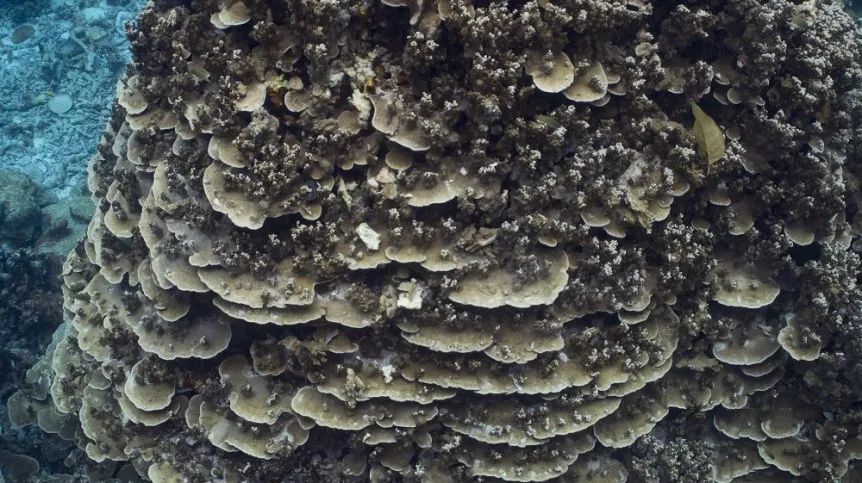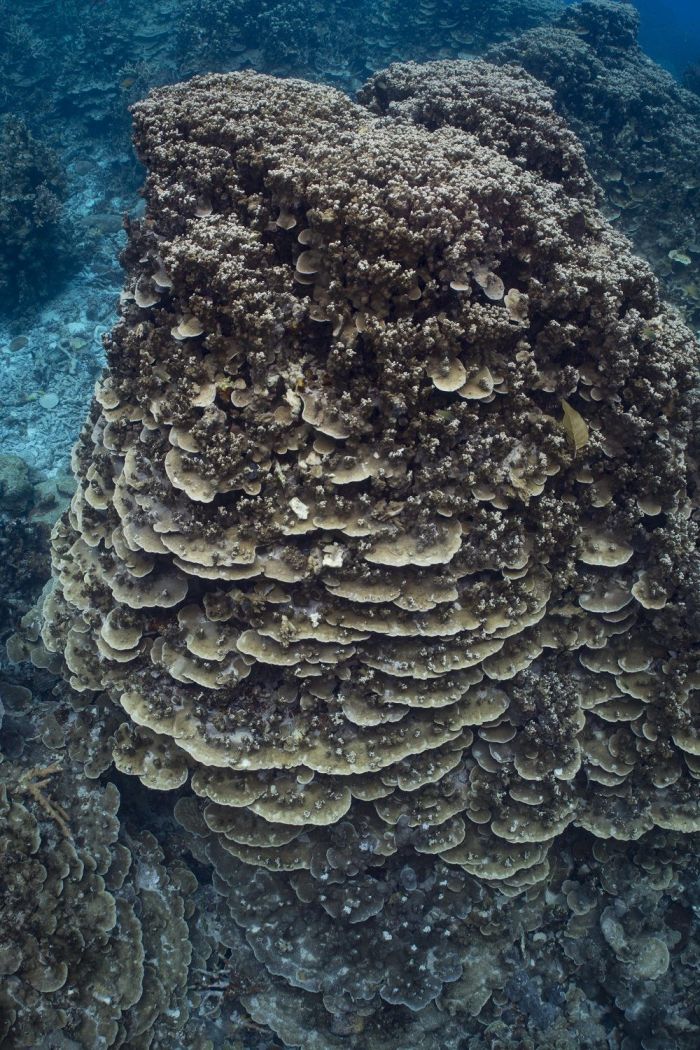
Reef corals from the Palaeozoic adapted to changing light in a way that was surprisingly similar to modern corals. They changed the shapes of their colonies to extract energy from light as efficiently as possible, say scientists researching the mysteries of the Devonian seas.
Flat in the lower part, and branchy in the upper part - this is how coral colonies look like in an indirect form of adaptation to changing light. If there is little light, corals develop platy colonies. When light is abundant, their colonies have a branching shape. It turns out that they 'knew' how to do it almost 400 million years ago.
A group of scientists from the University of Warsaw, the Adam Mickiewicz University in Poznań and the California Academy of Sciences studied fossils of tabulate corals from the Middle Devonian, ca. 385 million years ago. The Devonian was a period of reef development and great coral diversity. The analysis shows that despite almost 400 million years separating Devonian and modern corals, these organisms showed surprisingly similar responses to changing environmental conditions. Adaptation to changing lighting conditions is yet another mystery of the Devonian seas solved by a group of researchers from Polish universities in international cooperation.

'A large part of modern corals live in symbiosis with photosynthesising algae (dinoflagellates), so the availability of light is crucial to their functioning. Depending on the amount of available light, corals adjust the shape of their colonies to extract energy from it as efficiently as possible. A vivid example of this phenomenon is displayed by representatives of the genus Porities, which develop platy colonies in low-light conditions, while when light is abundant their colonies have a branching shape. Interestingly, intermediate forms with a flat colony base and branches growing out of it may also appear. However, this phenomenon has remained unknown in the fossil reefs,’ says Professor Mikołaj Zapalski from the Faculty of Geology of the University of Warsaw.
The scientists examined material from modern Morocco, Belgium and Poland, which consisted of Devonian corals from the now extinct Tabulata group, living during the time of a great development of reef ecosystems, under varying light conditions. The observations showed that, depending on the amount of available light, representatives of the genus Roseoporelladeveloped colony shapes that were almost identical to those of modern Porites corals.
As the researcher explains, phenotypic plasticity manifests itself in the ability of a given organism to develop different characteristics, such as morphology, physiology or behaviour, depending on the environmental factors affecting it, as part of its 'genetic programming'. This phenomenon is particularly visible in corals.
An article presenting the research results appeared in the journal Coral Reefs. It was prepared in cooperation between scientists from the Faculty of Geology of the University of Warsaw (doctoral candidate Aleksander Majchrzyk and Professor Mikołaj Zapalski), Professor Michał Jakubowicz (Adam Mickiewicz University in Poznań) and Dr. Pim Bongaerts of the California Academy of Sciences. The source text is available here.
PAP - Science in Poland
kol/ agt/ kap/
tr. RL













